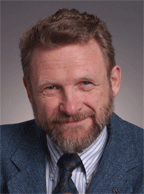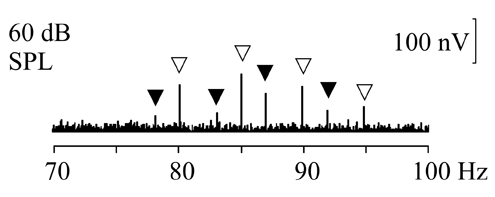Interview with Terence Picton M.D., Ph.D., Anne and Max Tanenbaum Professor of Cognitive Neuroscience, University of Toronto and Baycrest Centre for Geriatric Care
Topic: Auditory Steady State Response (ASSR): Issues and Answers
 Beck: Hi Terry. Thanks for your time today.
Beck: Hi Terry. Thanks for your time today.Picton: Good morning Doug. Nice to talk to you.
Beck: Terry, would you please tell me where and when you received your M.D. and Ph.D.?
Picton: I graduated with my M.D. in Toronto in 1967. Then, because I wanted to go into research, I obtained my Ph.D. at the University of California at San Diego (UCSD) in 1973 with Bob Galambos.
Beck: What was the topic of your dissertation?
Picton: "Evoked potential correlates of human auditory attention."
Beck: Terry, why don't we start by discussing the relationship between the standard, traditional ABR, and the ASSR?
Picton: Sure. Most audiologists are familiar with transient evoked potentials like the ABR that are elicited by a click or a brief tone. You evaluate ABR waveforms using amplitudes and latencies. The ASSR uses a train of clicks or any regularly recurring rapid stimulus, such as an amplitude modulated tone, presented at steady rates near 40 or 80 per second. The ASSR is usually evaluated in the frequency spectrum. You measure the response at the exact rate of stimulus presentation. In other words, if you're presenting a stimulus at 80 per second, you detect the response at the 80-Hz point in the spectrum. Importantly, with ASSR you can present 4 stimuli per ear at a time (using different rates), and so the test can run quite rapidly.
Beck: So can you use the ASSR to reconstruct the audiogram?
Picton: Yes. That is certainly one application of this technology. The ASSR can be used to estimate the audiogram of subjects who cannot respond accurately on behavioral testing, such as newborn babies or adults with a functional hearing loss. I should mention that steady state responses can be used in other modalities too. For example visual steady state responses can be used to assess visual acuity.

Beck: Good point. Going back to the ASSR though, can accurate frequency specificity be obtained?
Picton: Yes, it is quite reliable from 500 to 4000 Hz, and unlike the ABR, thresholds can sometimes be obtained up to 100 dB above threshold.
Beck: Do you envision ASSR as a screening tool?
Picton: At present, I believe ABR and OAE are the screening tools of choice because they are fast and can very rapidly classify screened individuals into the requisite pass/fail categories. If a newborn fails the ABR/OAE protocol, the ASSR can then be used to evaluate frequency specific thresholds prior to fitting a hearing aid. However, you can use also use the ASSR for screening. For example, you could record ASSRs to clicks at steady rates of 90 per second or more. In that situation, you could measure the response at all the "harmonics" of the presentation rate, e.g. 90, 180, 360, Hz and so on. Some people are investigating whether tonal ASSRs can be used for screening as well. The responses are smaller than those with clicks but you can record many of them. Today's protocols use the ABR and OAE for screening and the ASSR for follow-up. With future research the ASSR may become more widely used in screening as well.
Beck: Is there an age at which the ASSR "matures," or can it be used from birth?
Picton: Clicks or amplitude-modulated white noise give good ASSRs even in newborn infants. The tone responses are smaller. However, we believe that after 2 months of age, the ASSR can be used to obtain accurate frequency specific thresholds. The total test time to get thresholds at four frequencies in both ears would usually be about an hour to an hour and a half.
Beck: And of course, reconstructing the audiogram efficiently would facilitate earlier and better hearing aid fittings with more well defined data points, or perhaps a cochlear implant recommendation?
Picton: Yes, that is exactly right. The ASSR facilitates amplification and implant opportunities.
Beck: Have ASSRs been elicited using speech stimuli?
Picton: We've been exploring that, and it is coming along well. Our idea is to get some objective measurement of how sounds are discriminated, as opposed to just heard. Discrimination may be affected by distortion in the hearing aid or by central auditory processing disorders. Although we don't really have a lot of information about ASSRs in CAPD, this is an area very ripe for ASSR study. One interesting idea is to increase the rate of stimulus presentation and to see how rapidly the auditory system can follow the stimuli.
Beck: Thanks Terry, I agree. I think it would be amazing to gather ASSR data in patients with CAPD, multiple sclerosis (MS), migraine, or other neurological and brainstem disorders.
Picton: Yes, all of these areas are interesting. If we can define abnormal ASSR patterns consistent with those diagnoses, perhaps the ASSR can become part of the neurological workup as well as the audiological assessment.
Beck: Excellent point. Terry, thanks so much for your time today.
Picton: It's been great to talk to you, Doug. Thanks for the invitation.

